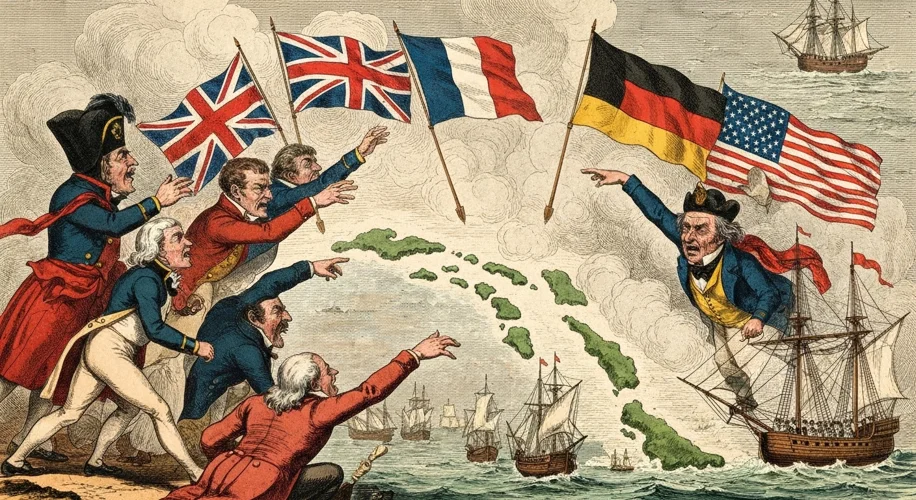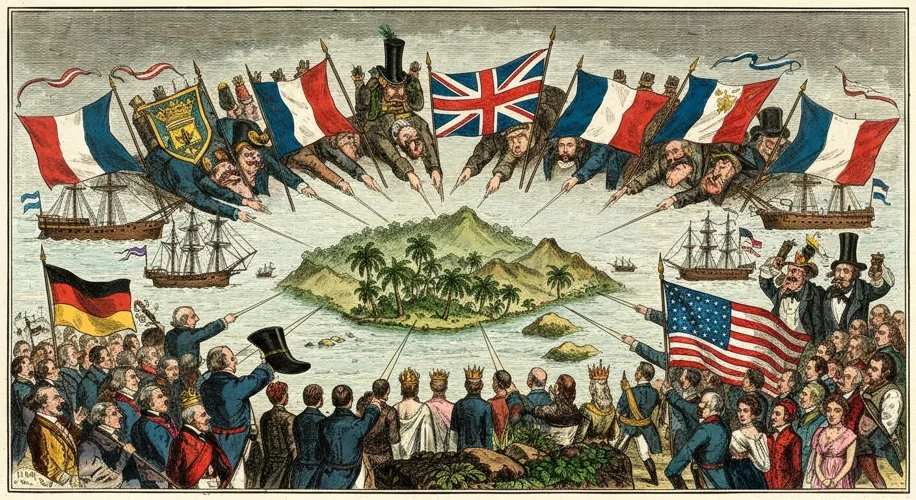When we think of the annexation of Hawaii by the United States, the narrative often centers on the overthrow of Queen Liliʻuokalani in 1893 and the subsequent political machinations. It’s a story of American ambition, missionary influence, and the strategic value of the islands in the Pacific. But history, like the vast ocean surrounding the Hawaiian archipelago, is rarely a single, unbroken current. Were there other nations that cast a covetous eye toward these lush, strategically vital islands before they became the fiftieth star on the American flag?
Indeed, the Kingdom of the Hawaiian Islands, though remote, was a prize of considerable interest to several global powers during the 19th century. Its location along vital trade routes, its fertile lands capable of producing lucrative sugar and pineapple, and its potential as a naval coaling station made it a geopolitical chessboard.
A Kingdom in the Pacific’s Crosshairs
For much of the 19th century, Hawaii maintained a precarious independence, navigating the complex geopolitical landscape by playing larger powers against each other. The Hawaiian monarchy, particularly under King Kamehameha III, sought recognition and treaties from various nations to ensure its sovereignty. This delicate balancing act involved careful diplomacy, with envoys dispatched to Europe and America to secure Hawaii’s place among nations.

The British Lion’s Roar?
Great Britain, with its vast global empire and powerful navy, was naturally an early player in Hawaii. British missionaries and traders arrived in the early 19th century, establishing a significant presence. For a time, British influence was strong, and there were moments when annexation seemed a distinct possibility. The British flag was even raised over the islands briefly in 1843 by Lord George Paulet, acting without authorization from London, due to concerns over French actions. However, London disavowed Paulet’s actions and reaffirmed Hawaii’s independence, preferring to maintain friendly trade relations rather than direct rule, which might have provoked other powers.
Britain’s interest was primarily economic and strategic, aiming to secure trade routes and protect its commercial interests in the Pacific. While there was no sustained, official push for annexation, the presence of British subjects and the occasional diplomatic pressure meant that Britain remained a significant factor in Hawaii’s foreign policy considerations.
France’s Fleeting Gaze
The Second French Empire, under Napoleon III, also showed interest in the Pacific. France had colonial ambitions and sought to expand its influence. In the 1830s and 1840s, French naval officers and Catholic missionaries exerted pressure on the Hawaiian Kingdom. There were incidents, such as the Dudoit Affair in 1839, where French naval forces landed to enforce demands related to the treatment of French citizens and Catholic missionaries. However, like Britain, France ultimately stopped short of annexation. The sheer distance, coupled with the growing influence of the United States in the region, made a successful takeover improbable and potentially destabilizing.
The German Shadow?
While less prominent than British or French interests, there were also instances of German nationals and businesses seeking to expand their influence in Hawaii. German immigrants settled in the islands, particularly during the latter half of the 19th century, and some advocated for German protection or annexation. German traders were active in the Pacific, and Germany’s rising power on the world stage, especially under Otto von Bismarck, meant that its potential reach was a factor that Hawaiian rulers had to consider, however indirectly.
America’s Inevitable Reach
Ultimately, it was the United States that exerted the most persistent and ultimately successful pressure. American missionaries, who had arrived in the 1820s, became deeply entrenched in Hawaiian society, economics, and politics. They often advocated for closer ties with the U.S. and, by extension, saw annexation as a natural progression. American businessmen, particularly those involved in the sugar industry, also benefited greatly from favorable trade agreements with the U.S. and saw annexation as a way to secure their economic dominance and eliminate trade barriers.

The strategic importance of Pearl Harbor as a naval base became increasingly apparent to the U.S. military. This strategic imperative, combined with the economic and cultural influence of American citizens, created a powerful coalition pushing for annexation.
A Kingdom’s End
In 1893, this pressure culminated in the overthrow of Queen Liliʻuokalani, orchestrated by American and European businessmen and planters, with the tacit support of U.S. Minister John L. Stevens and U.S. Marines. Although the immediate attempt at annexation failed due to President Grover Cleveland’s opposition, the provisional government established by the coup persisted. In 1898, amidst the fervor of the Spanish-American War and with a new administration in power, the United States formally annexed Hawaii.
While other nations had interests and had exerted influence, none possessed the sustained proximity, economic entanglement, and strategic desire that the United States did. Hawaii’s annexation was not an isolated event but a culmination of decades of growing American influence, a story that underscores the complex interplay of trade, power, and destiny in the Pacific.

